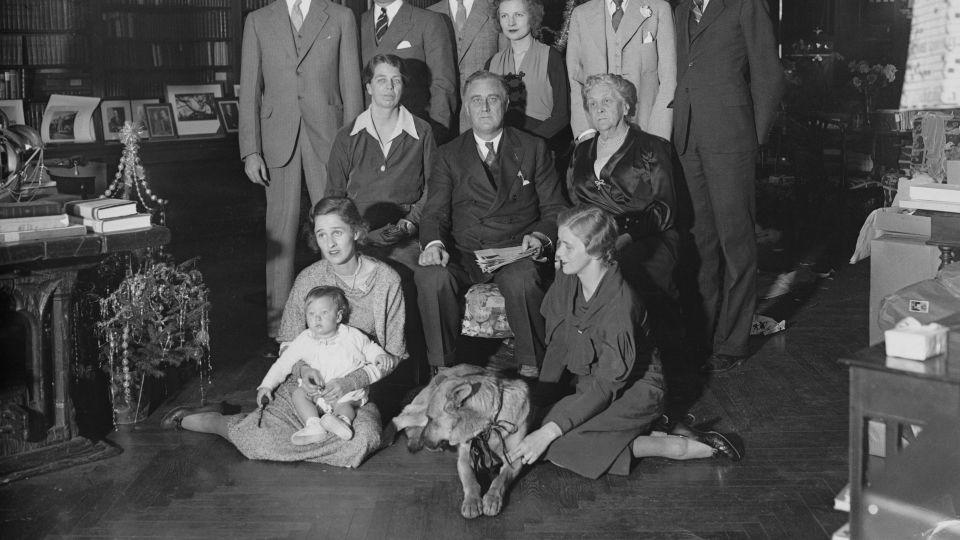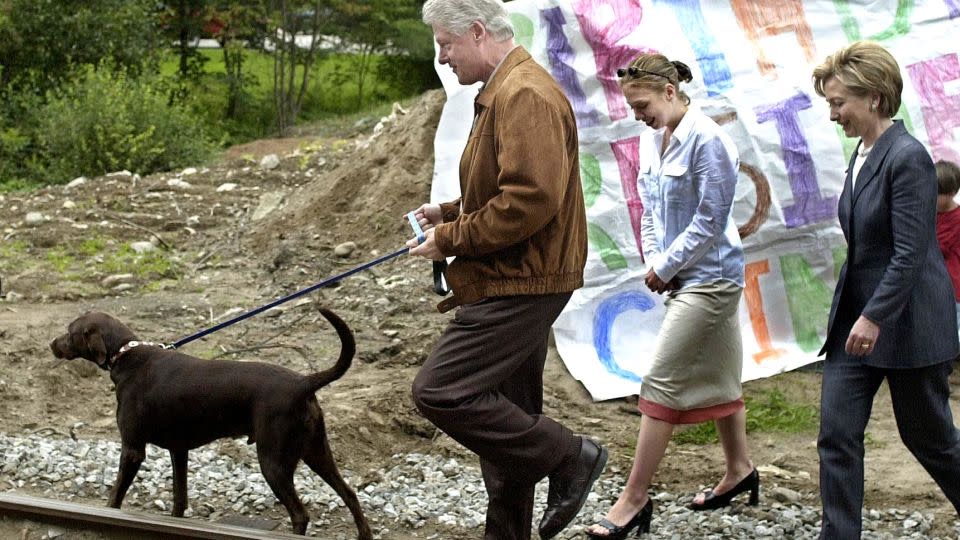Opinion: What’s going on with Biden’s dog Commander?
- Oops!Something went wrong.Please try again later.
Editor’s Note: Michelle Stern is a certified professional dog trainer (CPDT-KA), dog behavior consultant and former teacher. She is the host of the “Parenting Kids and Dogs 101” podcast. The opinions expressed in this commentary are solely her own. View more opinion on CNN.
Commander Biden, the first family’s 2-year-old German Shepherd, committed his 11th known biting offense this past week. Coming on the heels of the relocation of Major, another Biden pet, for similar sins, this pattern of behavior begs the question: WTH? Why are these dogs struggling in the White House?

On the surface, there seems to be a simple answer: The White House is a busy place where it’s hard to have consistent routine for a dog. Dogs love predictable patterns. It makes the rules clear and helps them to understand boundaries, something crucial for young dogs, in particular. But 31 out of 45 other presidents have had dogs, and very few have stirred up the commotion (at least publicly) that we have seen from the dogs belonging to the Biden family.
Of course, we can’t fully know why Commander and Major, also a German Shepherd, have had this problem when other first dogs, as far as we know, haven’t. But there are certain general guidelines around dog behavior and what we know about their situation at the White House that provides some insight into what’s going on – and what can be done about it.
Some dogs thrive in socially complex and busy environments while others struggle at the lack of structure. The reasons why run the gamut of genetics, learning history, environment and individual health and temperament.
But one of the big determinants is breed. Different breeds have different traits because they were all bred to do different jobs, from keeping someone’s lap warm to controlling rodent populations on farms. Some were bred for protection work while others were meant to move livestock from place to place and warn us if there were predators about.

While Presidents Herbert Hoover, Franklin D. Roosevelt and John F. Kennedy had German shepherds at the White House, historically many other breeds were well represented, such as setters, beagles and spaniels.
German Shepherds, as it happens, face a special challenge. They were meant to do two jobs instead of one. How confusing is that? Originally, they were herders, but now are widely used for their guardian tendencies and strong work ethic. (They are dogs who need a job. Their personality lends itself to guardian work but they want to work.)
As a consequence, German Shepherds were bred to be protective of their territory by moving people away. When they bark, snarl and lunge, people or other dogs should read that as threatening and back away. In that way, the dog should never have to bite.
As they begin to mature, adolescent and young adult dogs naturally become more suspicious of strangers. A cycle can develop when a young dog practices these behaviors and then they are repeated more often – leading to more frequent assertive displays toward “intruders.” Without professional support, young dogs can be unable to tell the difference between true threats and simply perceived threats.
Commander has likely given plenty of warning signs before chomping down, but it’s also likely that the busy White House staff hasn’t had the time to notice subtle signals such as a freeze, a hard stare or a raised lip. A dog’s body language is much like a traffic signal that offers plenty of communication about when it’s safe or when to slow down. But if the yellow light is missed, the sudden RED signal and resulting collision between teeth and skin is a horrible consequence.

Commander may also be misreading that the staff is a threat. When he bites someone, he probably thinks he’s doing his job. Unfortunately, that ends up making him a workplace hazard rather than a protector.
You might be wondering if Commander is a dangerous dog. After all, he has bitten 11 people, one of whom had to go to the hospital. But the truth is that we need a lot more information to make sure a determination. Were the bites “nips” from the front teeth? Deep bites from the incisors? And what’s the deal with the person who was hospitalized with two bites? Did Commander bite once and then dive in to bite again? Or was the second bite after the person began to retreat, as a herding instinct might dictate? Or was he grabbed and restrained after the first bite, only to redirect out of frustration and bite again?
Still, we don’t need the answers to these questions to know that steps need to be taken to prevent another bite. I see two viable options.
First, the Bidens can get Commander a dedicated caretaker – a humane dog professional who can help him to understand when he is off duty. He needs to learn that he can relax in certain zones of the White House and not be responsible for keeping everyone safe. He would benefit from learning behaviors that are more polite and appropriate than assertive communication displays.
When he can’t be supervised, I believe he should be spending time in a safe, managed space where he can nap and can’t hurt anyone. Baby gates or other barriers are likely not commonplace in the White House decor scheme, but they can be instrumental in preventing Commander from making further mistakes.
Alternatively, Commander can go live with someone who can give him a new sense of purpose. German Shepherds are excellent at search and rescue work because of their strong work ethic and intelligence. Maybe the best post for Commander isn’t in the hectic home of the president.
If the Bidens were to take that course and wanted to get another dog to live in the White House, an easygoing, amiable temperament would be ideal. Labradors, golden retrievers, spaniels and beagles have all been successful presidential dogs in the past and have the potential to be friendly, social additions to the White House.
Or, if they are looking for a simpler, less dramatic pet, perhaps they could take a page from the book of Louisa Catherine Adams, the wife of sixth president John Quincy Adams, who kept silkworms. They are far less likely to stir up a scandal or put the presidential staff in the hospital.
For more CNN news and newsletters create an account at CNN.com

